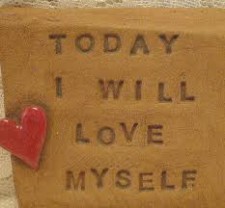Question for Bernie
 I have recently started listening to your “Meditations for Peace of Mind” which was recommended to me by my Psychologist. During the meditation, when I get to the house and find the living room and the chest, your instruction is to open the chest to get a message. The problem I am having is that I never get a message. You state that if there is no message in the chest, this also tells us something. My question is what does it tell us? What does it mean?
I have recently started listening to your “Meditations for Peace of Mind” which was recommended to me by my Psychologist. During the meditation, when I get to the house and find the living room and the chest, your instruction is to open the chest to get a message. The problem I am having is that I never get a message. You state that if there is no message in the chest, this also tells us something. My question is what does it tell us? What does it mean?
I have been through a lifelong hell since childhood, and I’m trying to help myself now mentally, physically, spiritually, and emotionally. BUT, when I hear you say, “If there is nothing in the chest, this tells us something,” all I do is wonder—what is it telling us?
In case the person who wrote in with a question on January 16, 2012, is still looking for which of your meditation CDs the one she remembered is on, it is this one—the one that I am now using, titled “Meditations for Peace of Mind.”
Thank you.
Bernie’s Answer
 All the pain you have experienced throughout your life up to this point is stored in your body, including within your heart (or you may wish to use the word “soul”). The chest represents your heart (or soul) in the meditation. So when you open the chest, as if to open your heart, and look for a message during the meditation, there is a message. It is that you find no treasure in the chest because your heart is filled with only the pain you have kept within yourself. There is no place for anything else. You need to remove the pain from your heart as well as from the rest of your body.
All the pain you have experienced throughout your life up to this point is stored in your body, including within your heart (or you may wish to use the word “soul”). The chest represents your heart (or soul) in the meditation. So when you open the chest, as if to open your heart, and look for a message during the meditation, there is a message. It is that you find no treasure in the chest because your heart is filled with only the pain you have kept within yourself. There is no place for anything else. You need to remove the pain from your heart as well as from the rest of your body.
With the help of your therapist, you need to open your mind and let out the pain of the past. Then you need to devise ways to completely abandon that pain, never letting it take up residence in your body, mind, and soul again.
Reset your focus completely and resolve to work on loving your life, self, and body. As you go through that process, you will fill your heart with love—the love of yourself and others in your life. You will find that you have the strength to forgive and let go, releasing a tremendous amount of pent up energy. At that point, when you get to the place in the meditation where you open the chest, you will get a message related to how you can use all this new-found energy to make your life very much worth living—the opposite of a living hell. If by chance you do the meditation after learning to love yourself and still find that opening the chest doesn’t seem to give you a clear message, remember that getting no message would very possibly actually be a message—a message validating just how far you have come.
Peace,
Bernie
Question for Bernie
I have been on medical leave from Brown University for an autoimmune disorder for the past two years. I was studying to get my undergraduate degree(s) in biophysics & neuroscience. After many failed attempts and months in pain and anger, I finally came to terms with my personal “failure” complex(es) and perfectionist-issues and slowly started to heal. Brene Brown’s book and TED talk helped immensely in kicking-off my own personal “rebirth” into a life focused on love, acceptance, peace, beauty and enjoying the moment.
 Eckhart Tolle was also incredibly influential in helping me to relearn, or perhaps learn for the first time, how to live and not constantly struggle against myself, others, and life itself. I’m still working towards finishing my remaining three credits at Brown. I am very drawn to the academic life and would appreciate any suggestions about research opportunities you may know of around the effects on our brains of our more urbanized, more crowded, more overstimulated environment, which seems to result in lessening opportunities for making the human connections which are so vital to our well-being.
Eckhart Tolle was also incredibly influential in helping me to relearn, or perhaps learn for the first time, how to live and not constantly struggle against myself, others, and life itself. I’m still working towards finishing my remaining three credits at Brown. I am very drawn to the academic life and would appreciate any suggestions about research opportunities you may know of around the effects on our brains of our more urbanized, more crowded, more overstimulated environment, which seems to result in lessening opportunities for making the human connections which are so vital to our well-being.
Bernie’s Answer
The need to express internalized anger is an issue in autoimmune diseases and disorders. It is very important to express that anger in positive ways, particularly healthy physical activity. A life in academia does not preclude taking good care of our physical bodies with balanced nutrition and exercise.
Describe how your pain feels—is it sharp, aching, dull, constant, annoying, maddening, burning and so on. Now, look at other things and people in your life. Can you apply any of those words that describe your pain from the autoimmune disease to how you feel about situations or people in your life? If you can, determine whether those situations or people are worth keeping in your life. If not, eliminate them.
 You are always the one who decides what you think and feel. You create the stress, so develop a mantra to help you when you feel the need to relax. Use meditation and visualization.
You are always the one who decides what you think and feel. You create the stress, so develop a mantra to help you when you feel the need to relax. Use meditation and visualization.
And yes to your final sentences. The problem and the therapy are all interwoven and energy related.
Peace,
Bernie

